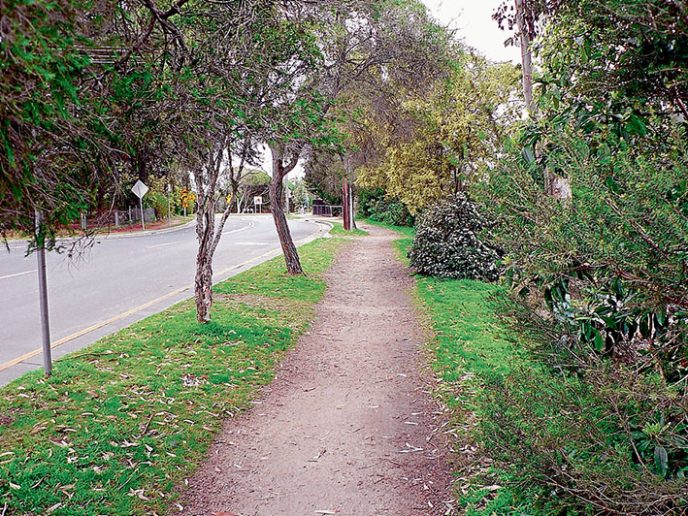SHIRE officers are examining a Supreme Court decision that effectively excluded a third of properties from a footpath special charge scheme in Jan Juc because they would not get the required special benefit from the proposed path network.
The case could be relevant if the controversial Somers path scheme – which proposes charging properties up to two kilometres from the proposed $1.5 million concrete path – is taken to VCAT, as some Somers residents have threatened.
VCAT’s decision-making history could mean the Somers appellants could face a huge legal bill whether they won or lost at the tribunal. They could face an appeal to the Supreme Court if the shire won. Such an appeal can only be made on a point of law.
In the Jan Juc case, the Victorian Civil and Administrative Tribunal had originally decided in favour of Jan Juc residents. The Surf Coast Shire then appealed to the Supreme Court.
In a complex technical ruling the higher court found the shire had exceeded its jurisdiction and directed VCAT to revise its original decision. That resulted in 23 of 67 properties not having to pay for the path network.
Mornington Peninsula Shire’s chief operating officer Alison Leighton said the shire had for years maintained a watching brief on VCAT decisions concerning special charge schemes.
In the Jan Juc case, the initial VCAT decision “was set aside by the Supreme Court and the scheme was then modified by consent – by agreement between the applicants and council,” Ms Leighton said. “The final outcome was not a decision of VCAT per se but rather a negotiated outcome between the parties.”
She said it should be noted that VCAT is not a court that follows precedent. “We do review tribunal decisions and assess applicability to Mornington Peninsula Shire schemes,” she said.
Surf Coast Shire had in 2009 proposed a “walk-ability and bike-ability” path network for Jan Juc village, near Torquay. Of 974 submissions the shire received, 892 eligible property owners objected. A further 54 late opposing submissions were lodged. That left 28 property owners apparently favouring the scheme.
The following year an amended path scheme proposing a 40 per cent cut in the original plan was approved. The shire claimed all within the scheme got a special benefit, either direct or indirect.
The shire argued in VCAT in 2011 that community safety was a key issue in the path plan, which it said was a benefit to all it encompassed.
Tribunal Member Nicholas Hadjigeorgiou said it was incumbent on objectors to establish “that they receive no benefit at all from the proposed scheme” to avoid paying for it.
“This is distinct from showing a lesser or marginal benefit. Thus, the bar for this test, to show no benefit, is set relatively high,” he said.
Mr Hadjigeorgiou found that a number of objectors did receive no benefit.
“While I can understand the council’s wish to include as many properties as possible within the scheme to minimise the cost per property, the test must be that these properties will receive a ‘special benefit’,” he said.
He ruled that the scheme “must fail” because of the number who received no benefit.
In the Supreme Court’s Court of Appeal, Justice Emilios Kyrou ordered that VCAT re-hear the case. His main finding was that the VCAT decision could not authorise setting aside the entire special charge scheme.
Back at VCAT, responding to the Supreme Court direction, Member Hadjigeorgiou heard further submissions on who should be excluded from the scheme on the ground of no special benefit.
He said the parties had consulted during the hearing “and by consent identified a number of applicant properties that would receive no special benefit,” he stated.
He ordered that the special charge scheme be “varied accordingly” and dismissed the residents’ appeal.
The 23 excluded properties and their owners were specified in his decision.
First published in the Southern Peninsula News – 23 February 2016


